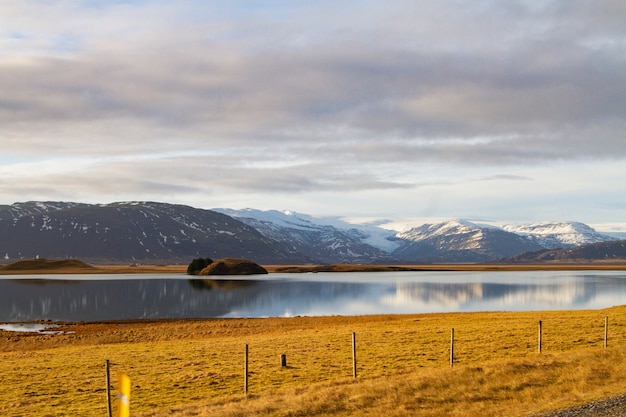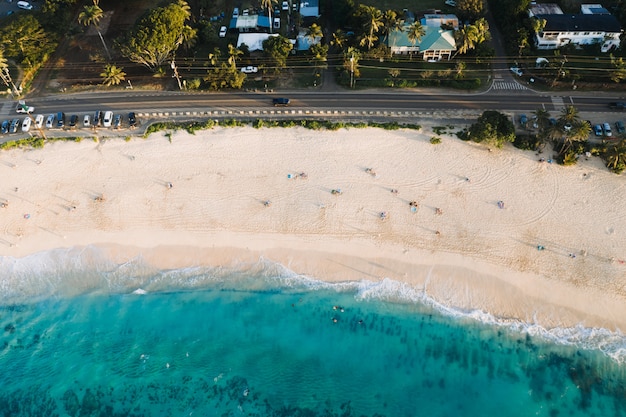
How much of your home country have you explored? As Canadians traveling abroad for around 11 years, we’ve barely seen our own country. Before our recent trip to Nova Scotia, Nick had only gone as far east as Edmonton, and I had only been to Montreal once as a kid.
It was high time to see more of Canada, and starting with one of the furthest eastern points made perfect sense. Our 15-day journey through Nova Scotia, Canada’s second smallest province, gave us a taste of the Maritimes and left us wanting more. Each of the seven main areas in Nova Scotia offered its unique landscapes, cuisine, and heritage. There are countless interesting and scenic spots to discover, so give yourself time to explore this region.
Check out this article and video below to learn more about traveling in Nova Scotia, including our top highlights and travel tips.
We hadn’t been on a press trip in quite a while; our last one was to Chicago in 2018. Earlier this year, we backpacked around Ecuador and Peru, enjoying a digital detox without work or campaigns. We were ready for another partnership that suited our interests, and the Nova Scotia tourism board was a perfect match.
Once we received the itinerary, we asked to tweak a few things to better fit our travel style, and they were happy to accommodate us. They understood the value of online media and the importance of aligning tours and excursions with our interests and those of our readers. The trip was a great fit!
Our 15-day trip to Nova Scotia included 10 planned days with the tourism board, leaving us time to explore on our own. We could’ve easily spent double the time there.
When we picked up our car at the Halifax airport, I reminded Nick to drive on the right-hand side of the road, as we’re used to driving on the left in Grenada. Nova Scotia’s paved roads, lane dividers, and traffic lights were going to be much easier to navigate.
After loading Google Maps, we set off to downtown Halifax. The sun was shining, our Dodge Charger was ready to go, and we were excited to start our journey.
Having your own car in Nova Scotia is essential. It’s a compact province, and driving around is pretty straightforward; it’s almost impossible to get lost. You just need to decide where you want to go and which scenic route to take. The jagged coastline with numerous bays, coves, and over 3,000 lakes, rivers, and streams makes for stunning drives.
Our road trip route was:
Halifax ➜ Peggy’s Cove ➜ Mahone Bay ➜ Lunenburg ➜ Blue Rocks ➜ Liverpool ➜ White Point ➜ Shelburne ➜ Barrington ➜ Yarmouth ➜ White Point ➜ Kejimkujik National Park ➜ Digby ➜ Annapolis Royal ➜ Wolfville ➜ Urbania ➜ Pictou.
We then crossed the Canso Causeway to Cape Breton Island:
Pictou ➜ Mabou ➜ Ingonish ➜ Baddeck ➜ Margaree Forks ➜ Inverness ➜ Halifax.
Traveling the world to learn about other cultures is amazing, but we discovered new cultures within our own country on the eastern coast of Canada. In 15 days, it was challenging to learn everything about Nova Scotia’s history and people, but we had positive experiences with the welcoming residents.
Nova Scotia is a cultural melting pot with the Mi’kmaq, French Acadians, Africans, English, Irish, Scottish, and more recent immigrants. The Mi’kmaq have lived in Nova Scotia for over 13,000 years, and we visited Kejimkujik National Park, home to ancient petroglyphs and routes used by the Mi’kmaq to travel between the Bay of Fundy and the Atlantic Ocean in wooden canoes.
Nova Scotia translates to “New Scotland” in Latin, and Scottish influence is still strong, especially on Cape Breton Island and in Pictou. From Ceilidhs and fiddle music to their accent and cuisine, Scottish roots are prominent. We spent time in Pictou, where the first Scottish settlers arrived aboard the Hector ship in 1773. The town embraces its Scottish heritage with yearly festivals, bagpipes, traditional games, food, and highland dancing.
We also visited Acadian communities in the southwest and Cheticamp on Cape Breton Island. The French arrived in Nova Scotia in the 1600s and set up their base in Annapolis Royal, a charming community we stopped in on our way to Wolfville. Acadian influence is visible in the food, language, and architecture.
Throughout our trip, we found each town had historical significance. Next time, we want to immerse ourselves further in the local culture, learn more about the Acadians, Africans, and Mi’kmaq people, and spend more time camping and exploring national parks.
Here are some highlights from our journey:
Halifax:
This city, with around 430,000 people, is set on the second-largest natural harbor in the world, making it picturesque. There’s so much to do, including strolling along the Waterfront, trying local foods like poutine and beaver tails, visiting the Atlantic Maritime Museum, and even riding an amphibious vehicle, the Harbour Hopper, through the streets and into the ocean. Just a 5-minute ferry ride away is Dartmouth, which features colorful buildings, street art, cafes, and great views of Halifax.
Lunenburg:
Located on the South Shore, this UNESCO-listed town is all about fishing. With fishing boats, fish ornaments, shipbuilding museums, and seafood on every menu, it’s clear the town has deep ties to the sea. The Georgian, Victorian, and Colonial-style homes add to its charm. Don’t miss the Ironworks Distillery, producing delicious fruit liqueurs and harder spirits.
Blue Rocks:
A short drive from Lunenburg, Blue Rocks is popular with photographers. We went kayaking with Pleasant Paddling and enjoyed the calm, protected waters, spotting bald eagles, black ducks, and seals.
Digby Neck:
Located outside Digby, this peninsula is perfect for whale-watching trips in the Bay of Fundy. We were fortunate to spot a humpback whale named “Rooftop” and even a Finback Whale. Seeing these magnificent creatures in their natural habitat was a highlight of our trip.
Tidal Bore Rafting:
This unique experience can only be found in Nova Scotia. The Bay of Fundy’s highest tides meet the outgoing Shubenacadie River, creating swells, waves, and rapids. We had a blast riding these waves in a zodiac, laughing and gulping down water and mud, and even did some mud sliding.
Cape Breton Island:
There’s so much to see and do on Cape Breton Island. The Cabot Trail drive is a must, but take your time and explore along the way. Highlights include Inverness, with its oceanfront boardwalk, golfing, and brewery, and Glenora Inn and Distillery. The Margaree River offers excellent fly-fishing, and Cape Breton Highlands National Park has fantastic hiking trails. Ingonish Beach’s sandy or rocky shore and the stunning Keltic Lodge round out the island’s attractions.
Now that we’re back in Grenada, we’re letting our Nova Scotia trip sink in. We took lots of videos and photos and will be creating several videos showcasing the best places to visit in Nova Scotia, top things to do, and must-sees in Halifax. These are now available on our website and YouTube.




